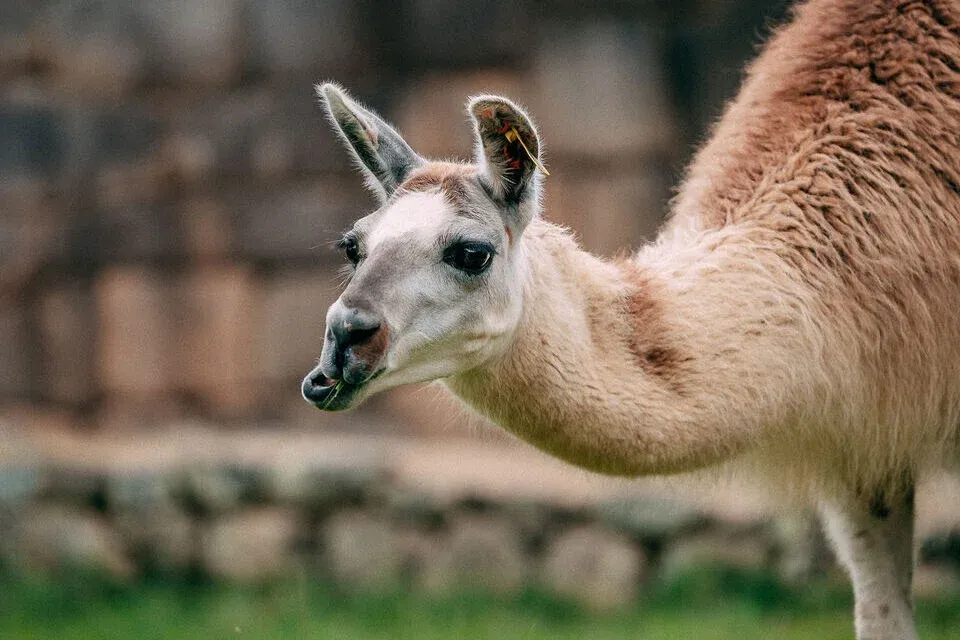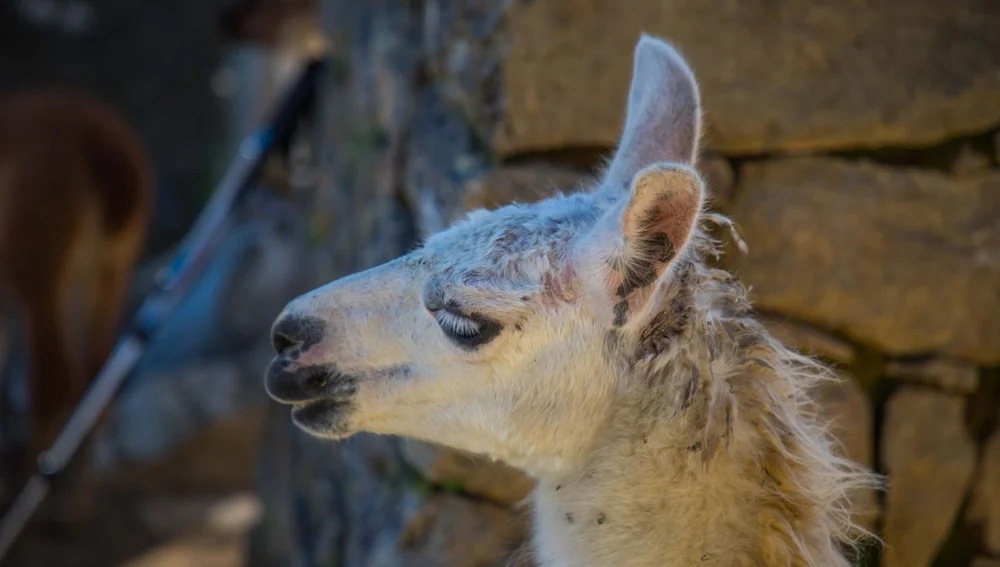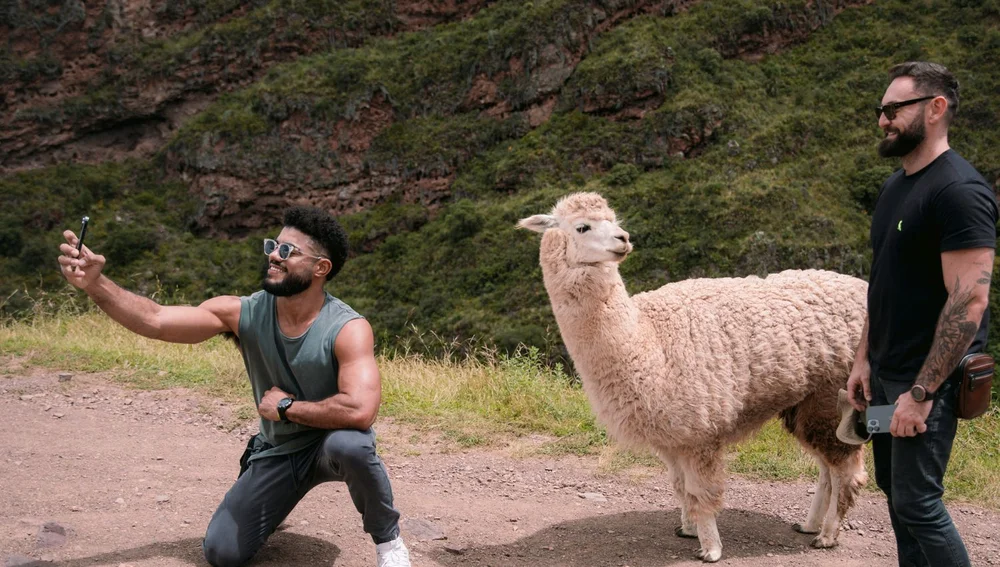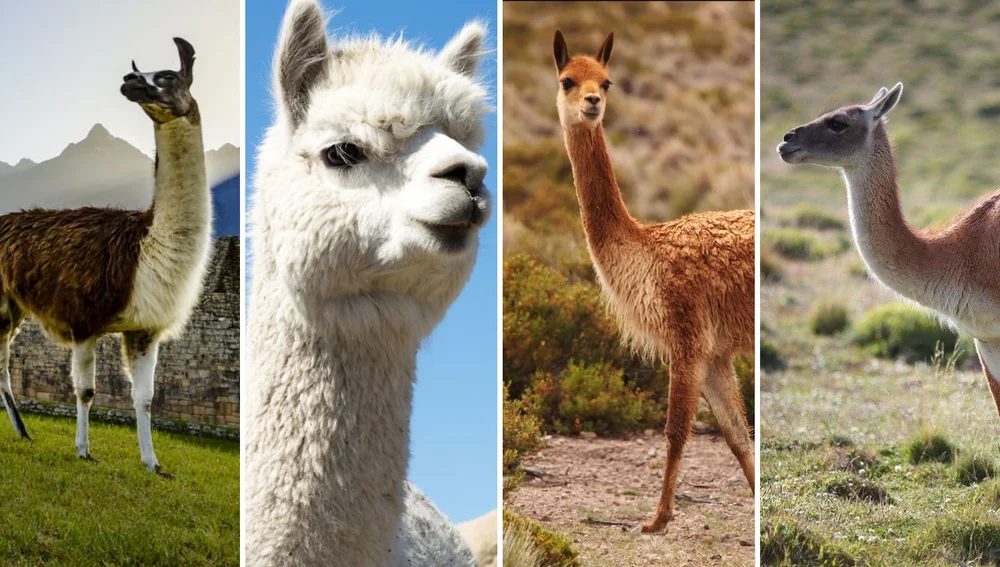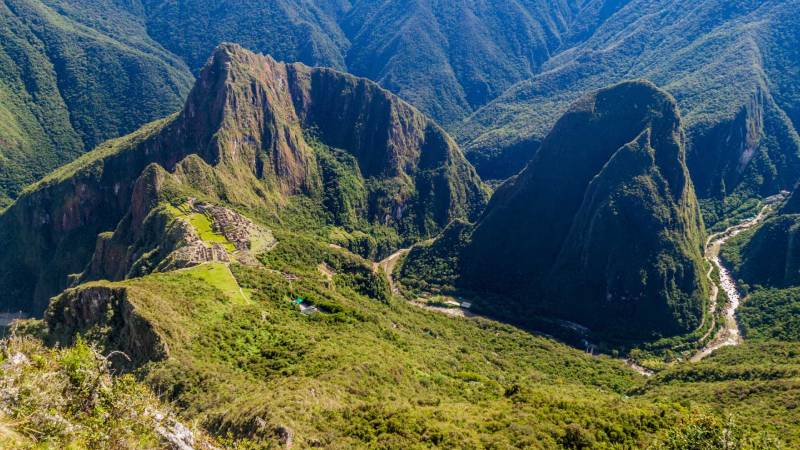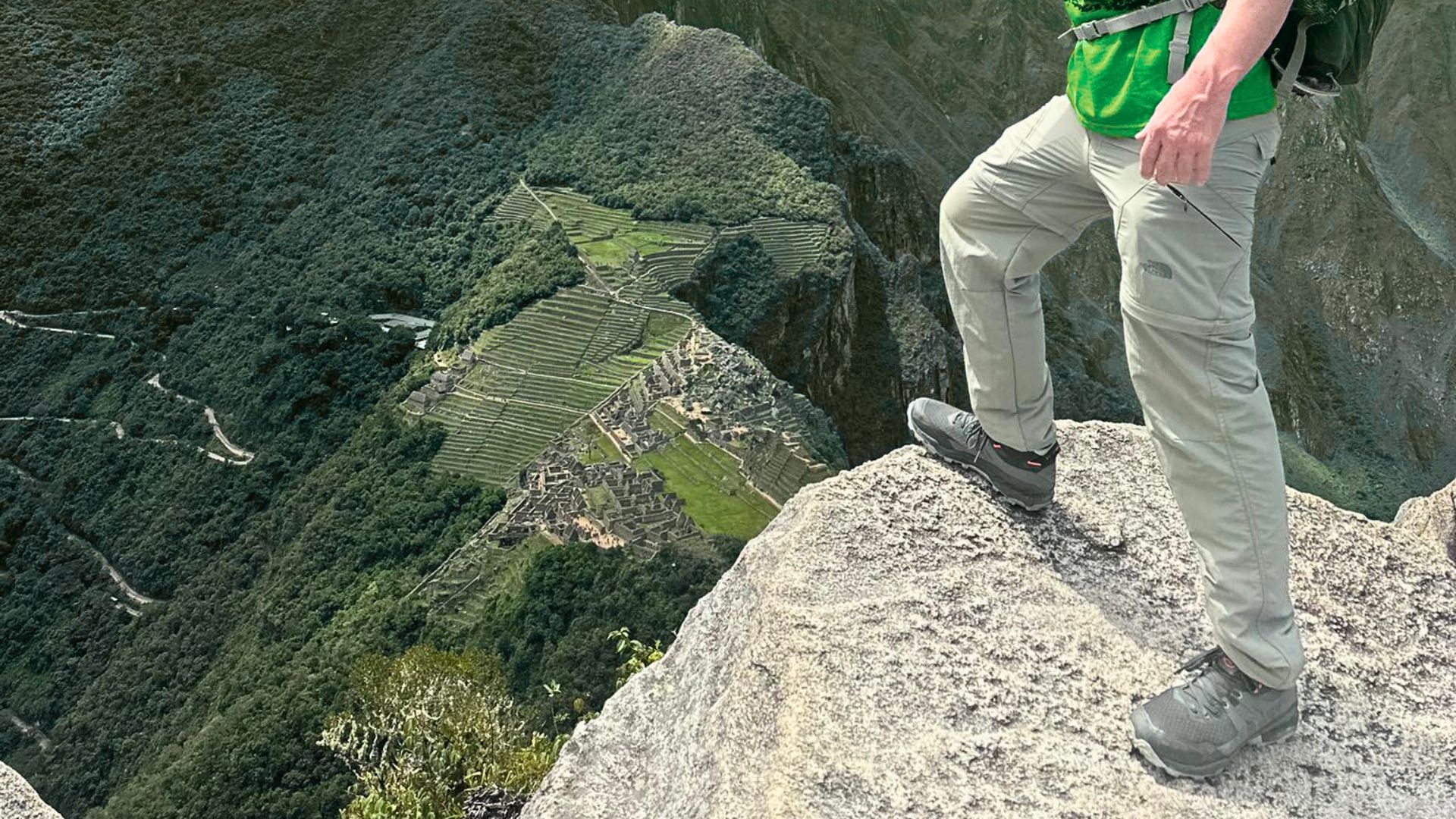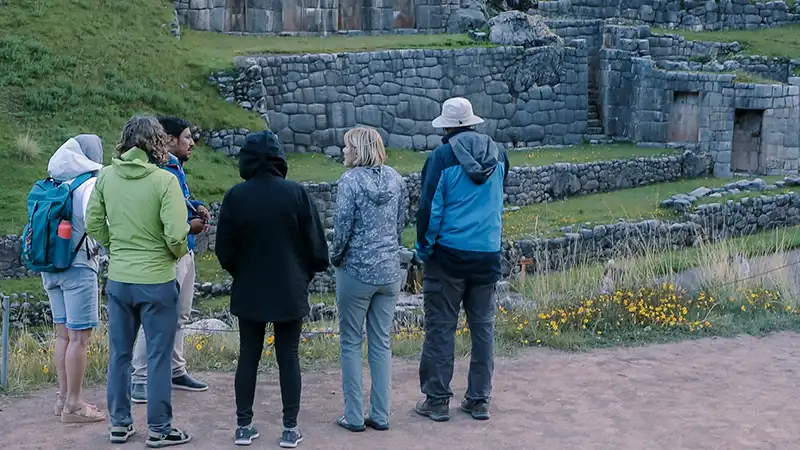The llamas lives at Machu Picchu and can give you a moment of happiness to see their curious behavior, although they did not always live in Machu Picchu. Everything would seem to indicate that they have their own history and secrets that you should know.
The llama is a South American domestic mammal. It is essential to pre-Hispanic Andean cultures. Above all, it played a prominent role in the Inca period. Its behavior is tame and docile, with a calm, friendly and curious temperament. On the part of its coat is fluffy and of various colors; which represented status and wealth. Providing a wide range of goods and services; including religious sacrifices, transportation and medicine. The “Llamero” (Andean man) made the Llama the key to civilization in the Andes. They gave way to the breeding and care of this animal species. In conclusion, to this day, it is an important part of trade and life in the Andes.
Origin of Llamas
About 40 to 45 million years ago. The first camelid originated in North America from a small 30 cm tall ancestor. When a camelid called “Parazemelus” migrated to Asia across the Bering Strait. Heading to South America during the years 35,000 to 7,000 BC.
After migration to these new territories, camelids were hunted persistently in the Andes. Until 10,000 to 12,000 years ago, in the Altiplano, the domestication of two species of camelids, alpacas and llamas, took place. The largest number of alpacas is found in Peru and Bolivia has the largest number of llamas. In northern Argentina and Chile we find smaller numbers of alpacas and llamas. Colombia and Ecuador have lower numbers of alpacas and llamas.
Llamas are an iconic symbol of the Andean region and are closely associated with Inca culture. They are native to South America and have been domesticated for thousands of years. They play a vital role in the lives of Andean peoples. Llamas were essential to the Inca civilization for their use as pack animals, sources of meat and wool, and as sacrificial offerings in religious ceremonies.
The function of llamas
At Machu Picchu, the famous 15th-century Inca citadel in the Peruvian Andes, llamas can often roam the site. They are not only an attraction for tourists. They also serve a practical purpose in helping to maintain the grounds. By grazing on the grass, they help to keep the vegetation in check and preserve the archaeological site.
Did You Know that: Herders in the Peruvian region of Ayacucho believe that their herds of llamas and alpacas do not belong to them. However, they believe that they are the property of the “wamani”, spirits that reside in the waters or on the mountain tops.
Llamas are well adapted to high altitude environments. This made them the perfect animal for the Incas in the mountainous terrain of the Andes. The llamas' padded feet are gentle to the terrain, and their ability to carry heavy loads over long distances made them invaluable for transport in the Inca Empire. It made them invaluable for transportation in the Inca Empire, including the construction of sites like Machu Picchu.
What are Llamas?
The llama is an artiodactyl mammal (it rests on the ground with at least two toes). They are domestic of the camelid family, native to South America. They were bred by the Andean peoples of the altiplano and are descendants of the guanaco.
| Scientific name | lama glama |
|---|---|
| Species | Artiodactyl mammal |
| Size | 92 cm-160 cm |
| Weight | 130 g-200g |
| Family | Camelidae |
Benefits of Llamas
- Alpacas and llamas provided the Andean people with fiber for clothing, skins, food through their meat, and transportation in the case of the llama. The animals' manure was used as fertilizer and fuel.
- When the llama was already an old animal, its meat was consumed in the form of charqui (dried salted meat). This technique was used by the Incas to preserve the meat for consumption. However, the leather was used to make sandals, the bones to make tools and musical instruments and the tendons to make slingshots.
History in Pre-Inca Period: How did the Llamas Originate?
The domestication of llamas was carried out by different cultures prior to the Inca Empire. Exactly in southern Peru, northern Chile, northwestern Argentina and western Bolivia where they lived. An action that was carried out by the inhabitants of the Peruvian Andes 6,000 to 7,000 years ago and that this process generated the current llama from the guanaco.
This fact confirmed in 1974 by the archaeo-paleontological excavation at Telarmachay at 4200 meters above sea level. The French archaeologist Danièle Lavallée provided information on the llama and alpaca. In conclusion, 400,000 bone remains were observed.
The vicuña and the guanaco were the ancestors of alpacas and llamas. In a domestication process that began in the central Andes of South America 6000 years ago. Their meat was used for human consumption, their bones were used as musical instruments or tools and their fibers were used for weaving. The Huaca Prieta Culture 2500 years ago, had an evident development in the Paracas Culture and later reached levels of excellence in the Mochica Culture.
Likewise, llamas and alpacas were used in religious ceremonies to promote fertility in their herds and the presence of rain.
Inca Period: They Decided their Destiny according to their Color
The Incas bred llamas of specific colors for certain ritual functions. The fine white llamas, called napas, were considered a royal symbol. These animals were treated differently. They wore necklaces of Spondillus (red shells from the Pacific), gold earrings and finely embroidered blankets. A napa always opened the way to the Incas, while the black flame was a sacrificial offering to the god Inti. The character dedicated to the shepherding and care of these animals is called “Llama Michi” who was associated with the lower social ranks. And “Llama Camayoc” meant caretaker of the llamas of high social level. These animals were property of the Inca empire, which could not be hunted without the permission of the Inca.
The Incas also performed sacrifices of llamas and alpacas in religious ceremonies. Because the purpose was to promote fertility. In addition to sacrificing and burying these creatures in newly conquered lands to confirm the Inca presence. In the month of November, the Inca empire carried out a careful census of their herds called initiation rites.
Llamas were pack animals that accompanied the Inca armies. They moved from the high punas to the arid areas of the coast.
It consisted of a feast before using a llama as a pack animal for the first time. In which the Incas adorned the llama's body and then embraced it and gave it a thousand compliments. They spoke to it affectionately. And finally they decided to put the first weight on it, while the partygoers danced to the sound of music.
Llamas as part of ritual events:
- At the arrival of the corn harvest season, in May of each year. One hundred llamas of all colors were sacrificed.
- The death of a hundred brown llamas accompanied the beginning of the agricultural year. So that the corn would not be burned by frost or lost due to drought.
- In October, to invoke the arrival of the rains, one hundred white llamas were also sacrificed. Even one hundred black llamas were left to starve to death.
Why are there llamas at Machu Picchu?
The presence of llamas in the archaeological park reminds us of the domestic and sacred animal of the Inkas. Which was the main material in ceremonial and ritual events, as well as in the founding of new cities where these animals were sacrificed according to the color of their fur, also remember that it was a means of transportation and cargo of the Inca armies during the expansion to new territories serving as a source of food for the Inkas.
When the Spaniards arrived
IIn colonial times, the Spaniards found four different camelids such as alpaca, llama, guanaco and vicuña. This was the time when an era of persecution and marginalization of these animals and their breeders began. They quickly displaced from the most favorable areas. Forcing them more and more towards the high Andean environment. Where they found refuge in areas where the livestock species introduced by the Europeans did not thrive.
After the conquest, their numbers and geographic distribution were reduced. As well as their economic importance, many of their functions were usurped by animals from Europe.
Use of Llamas today at Machu Picchu
Nowadays, llamas are generally used as pack animals. But in the past they were sacred and venerated animals and even worshipped as a deity. In Machu Picchu llamas are a centerpiece of this scenery full of beauty and mystery. Seeing llamas at Machu Picchu adds a special touch to the experience of visiting the site. Because they provide a living connection to the Inca civilization and the cultural heritage of the region. The presence of these animals contributes to the authenticity and atmosphere of the ancient citadel. Which makes for memorable photographs and experiences for visitors.
Legend tells it that the llamas were created thanks to the mythical founders of the Inca Empire, Manco Capac and Mama Ocllo. When an inhabitant fell in love with one of his younger sisters, destined to be the Virgin of the Sun. Upon learning of this, the emperor forbade their wedding. But the young people disobeyed and fled. This cost them a death sentence.
The mother, praying to the god Viracocha, got him to take pity on them, turning them into a couple of llamas. It is said that when Manco Capac learned of the existence of two animals with human appearance, he ordered them to be taken to Cusco to recognize them and send them to sacrifice. Then, their spirits traveled to the abode of Viracocha. And that is why it is said that when the llamas reach their destination, they recover their human form and return to the world of men.
Types of llamas
We have two phenotypes of llamas, the Ccara-Pelada and the Ch'aku-Lanuda. You will recognize the Ccara types by their slender, elongated body with short fur. The Ch'aku llamas, on the other hand, have shorter bodies and more abundant wool.
Differences between the 4 camelids
Llamas - Lama glama
It is the largest domestic animal in South America. It is extroverted, tall (1.40-1.50 m), heavy-bodied (150 g), long white to dark brown coat, long neck, long and pointed ears with short muzzle. They are therefore pack animals.
Alpaca- Vicugna pacos
Alpacas are domestic animals, shy with humans. They are smaller in size (1.20-1.50m) than the llama, therefore they are light-bodied (90g). They have 22 shades of colors (white, black, brown and gray), soft and long fur, with short neck, rounded ears, long and protruding muzzle. The most important thing is that it is not a pack animal.
Vicuña-Vicugna vicugna
They are small wild animals (1.30 m). In addition, they have a light body (40 kg) with a fine reddish brown coat and white belly, with deeply divided hooves.
Guanaco-lama guanicoe
It is the largest wild animal in South America (1.30 m). They lives in arid and semi-arid environments. It has a heavy body (90 kg). Similarly, its color varies in shades of brown, white chest, with small, pointed and raised ears, large brown eyes and short fur.

